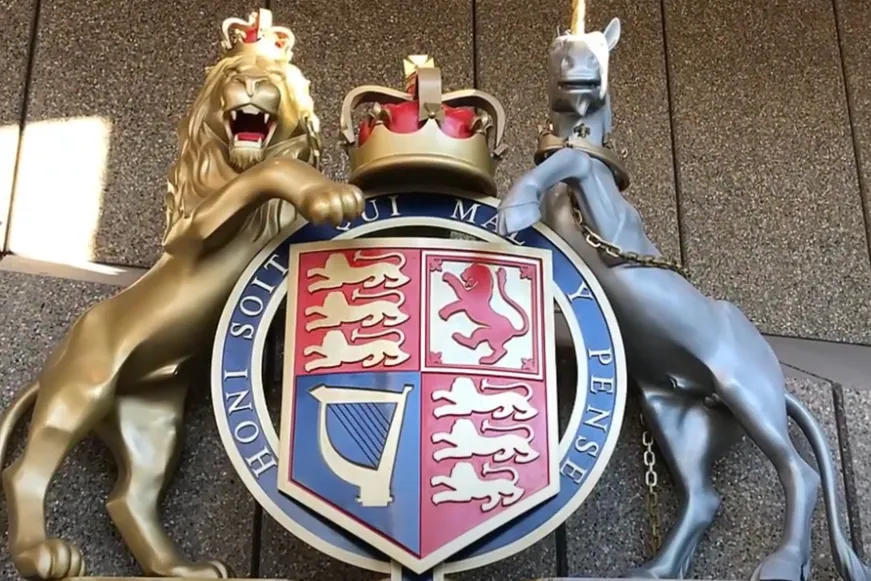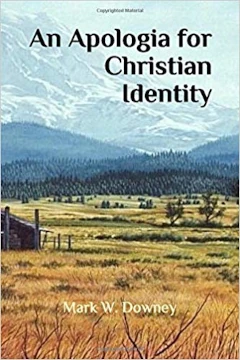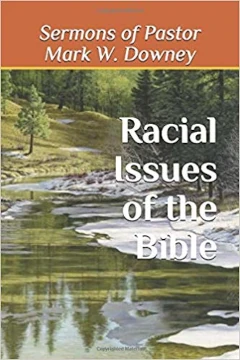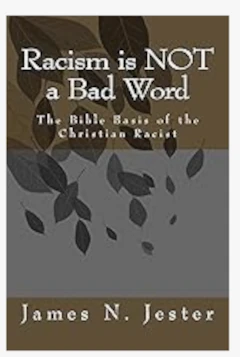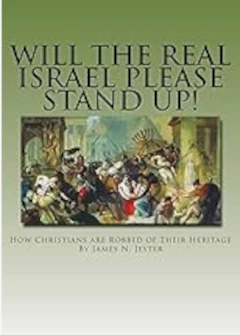Four Hundred Year Argument - Part 1
Copied from the sermon notes of Pastor Don Elmore
January 3, 2021
Scripture Reading: Acts 26:6, 7
6) “And now I stand and am judged for the hope of the promise made of God unto our fathers:
7) Unto which promise our twelve tribes, instantly serving God day and night, hope to come. For which hope’s sake, king Agrippa, I am accused of the Jews.
Supposed President-elect Joe Biden and supposed Vice President-elect Kamala Harris are Time Magazine’s “Person of the Year” for 2020. Well, that is very interesting. The “person of the year” is in a criminal investigation which has made both he and his son and his brother multi-millionaires. He extorted money from the Ukraine, Russia, China, Afghanistan, Costa Rice, Romania, Jamaica, etc. He is really the “traitor of the year.” Good pick, Time Magazine. And why is his vice-president, who is a Indian/black mixed woman, also considered “Person of the Year” with him; it is not the “Persons of the Year”?
And then they nominated as Businessperson of the year, Eric Yuan, the CEO of Zoom. Most people in America have been on a Zoom conference. It is used in businesses too. It is now used commonly in the political realm. That is a Chinese run business that has taken zoom conferences off the air in one minute if they say anything bad about the Chinese influence on America. They have done the same thing that Twitter, Facebook and Google are doing. And they picked LeBron James as the athlete of the year, too.
And then we have a Democratic Representative, Eric Swalwell, who served on the House Intel Committee, who had a Chinese girlfriend, whom he was sleeping with. The miscegenator, not only committed this sin, but his girlfriend is also a Chinese spy. She also got another Chinese spy, who was an intern, into his office. Nancy Pelosi defended this member being on the House Intelligence Committee. But this is only the tip of the iceberg.
 What about Senate Majority Leader Mitch McConnell, who has married a Chinese woman, Elaine Chao. Elaine was chosen to be the head of the Transportation Department by President Trump. McConnell’s father-in-law, James Chao, sits on the board of the China State Shipbuilding Corporation which is the largest defense contractor in China. Mitch McConnell, as a senator, traveled to China with his father-in-law, James Chao, as guests of the China State Shipbuilding Corporation.
What about Senate Majority Leader Mitch McConnell, who has married a Chinese woman, Elaine Chao. Elaine was chosen to be the head of the Transportation Department by President Trump. McConnell’s father-in-law, James Chao, sits on the board of the China State Shipbuilding Corporation which is the largest defense contractor in China. Mitch McConnell, as a senator, traveled to China with his father-in-law, James Chao, as guests of the China State Shipbuilding Corporation.
Elaine’s sister, Angela Chao, was named to the Bank of China’s board of directors just 10 days after Trump’s victory. Angela’s husband is good friends with the President of China. Does anyone think that Senate majority leader Mitch McConnell is compromised in his dealings with China?
And what about Diane Feinstein who has a Chinese chauffer (for 20 years) who is a Chinese spy? What about the National Basketball Association with all its Chinese money? What about Apple, Facebook, Google, Twitter and their loyalty to China because they desire to keep doing business in their country? “Love of money is the root of all evil.”
------------------------------------------------------------------

-------------------------------------------------------------------
The apostle Paul makes his defensive argument in the court in which he states that he is “judged for the hope of the promise made of God unto our fathers.” What promise was that? What promise was “made of God unto our fathers?” And if the promise was made unto our fathers, that would make it a racial promise because it is made with a family!
It is this racial promise that the Apostle Paul is said to be “accused of [by] the Jews.” It is this racial promise that “our twelve tribes” hope to take part in. Who are “our twelve tribes” but the tribes of Israel, the covenant people?
And who accused him of preaching this message to the tribes of Israel? It was the Jews. Because they were not of the pure race of the covenant, because they had intentionally interracially married. They married into the forbidden seed of the Canaanites/Cainites.
Notice that the Apostle Paul was not directly accused of believing that either God is sovereign or that man has a free-will. He is being accused by the descendants of Edom that he is teaching the pure seed of Jacob that they have the promise of their fathers: i.e. Abraham, Isaac and Jacob.
CALVINISM AND ARMINIANISM
Ever since the early days of the Protestant Reformation, there has been the argument between the two groups. It is an argument that goes back nearly 400 years and continues today, although most church goers are now unaware of what the two different theologies teach. In fact, most are totally unaware of what the two words mean. And most “Christians” don’t know if they are Calvinist or Arminian—they just say they are Christians. That is certainly true of the Arminians. And they both miss the central point of the Bible.
Which one is correct? It has been argued for centuries. It has split denominations, churches and even families and friends. It has even caused the death of many who were on opposite sides who fought against each other in the past.
Does the Bible teach Calvinism or Arminianism, or does it teach something else? What did the Bible teach over 400 years ago before both different theologies came into being? Does it teach the sovereign decree of Almighty God or the free will of humankind? Which one is correct; or are they both wrong?
They both can’t be right, for many of their doctrines are the opposite of each other. For example, is it God’s sovereign will as to who He will save, or is it man’s choice as to who God saves?
So, do the believers in the doctrines that were taught by John Calvin reject the doctrines that were formulated by Jacob Arminius. Does Arminianism reject Calvinism? Does it make any difference which one is believed? Is one “saved” if he follows the wrong view? Which one is true, and which one is a lie? In other words, does a Calvinist deny an Arminian’s salvation and vice versa? Is either doctrine false?
Calvinism was massively influential, especially in Europe, where it began about 500 years ago. Martin Luther and John Calvin were two of the most famous reformers who taught this doctrine which is named after Calvin’s last name. John Calvin’s Bible commentaries and his book, The Institutes of the Christian Religion, are still widely influential in the Christian churches, especially in the Reformed Churches.
Jacob Arminius was originally a believer in Calvinism. But he eventually rejected its teachings on predestination and he and his followers started a disagreement that has lasted over four centuries. His views are named after his last name.
In 1610, ten years before the Pilgrims landed at Plymouth Rock, Arminius penned a document called The Remonstrance, which became the formal and clearest protest against Calvinism. The Pilgrims were Calvinists, who didn’t celebrate the Mass of Christ and Easter. They were anti-Catholic. Most of the churches in the Northeastern United States, in the beginning of the formation of this nation, were followers of the doctrines of Calvin. Their Bible was the Geneva Bible, the forerunner of the King James’ Bible. There were few Arminian churches. Calvinism originated in the reformation movement against the Catholic Church.
But Arminius’ document led to the Synod of Dort (Netherlands), during which the doctrines of Calvinism were articulated into the five points of Calvinism which were in response to the five objections made in The Remonstrance. The Arminians have slowly captured the churches, and America soon was dominated by multi-cultural Arminian churches. But is Arminianism scriptural? Where did it come from?
ARMINIANISM CAME FROM THE CATHOLIC JESUITS
The author, Augustus Toplady, of the famous hymn “Rock of Ages” written in 1763 and many Calvinists of his day, knew that Jacobus Arminius was a secret agent of the Jesuits. The Jesuits’ one function was to put an end to the Protestant Reformation. Their job was to destroy Protestantism and bring everyone back into the Catholic Church.
The Jesuits themselves have revealed that Arminius was their secret agent to poison the doctrines of the Protestant Churches. Under Arminianism, those who choose to believe in Jesus, can also of their free will choose to reject Jesus, and lose the salvation that they had previously grasped. The slight difference of “prevenient grace” under Arminianism is a distinction without a difference from semi-Pelagianism. Arminianism is essentially dressed up semi-Pelagianism.
Arminius was a forerunner of Cyrus Ingerson Scofield and other Jesuit agents. In 1585, the Jesuit Francisco Ribera was a contemporary of Arminius and published a prophetic commentary in which he put the 4th through the 22nd chapters of the book of Revelation into the far distant future. Another Jesuit, Luis de Alcazar put the fulfillment of prophecies of Revelation in the past. Another Jesuit, Emmanuel Lacunza, suggested that the second coming of Jesus would be in two stages. Shortly after Lacunza’s writings, Margaret Macdonald in Scotland taught that the Second Coming would be in two stages. Soon, most “Christian” churches would be teaching this doctrine whose origin was the Jesuit Catholics.
Arminius taught the doctrine of semi-Pelagianism that was promoted by a Jesuit priest named Luis de Molina. Molina taught that God predestined believers to salvation but at the same time they could somehow reject God and lose their salvation. As is common with deceivers, they just changed the name. This time they changed the name of their doctrine from Molinaism to Arminianism. Many today view Arminianism as an orthodox Christian view of Scripture, when in fact it is a corruption of the gospel.
Also, William Laud, the Archbishop of Canterbury, was working secretly with the Jesuits too. His plan was to infect the Church of England (Anglican Church) with Roman Catholic doctrine, including Arminianism. In 1638, eighteen years after the Pilgrims first landed in Plymouth, Laud ordered the exclusive use of a “papistical” liturgy upon the Presbyterian Church of Scotland. It became known as “Laud’s Liturgy.” Laud was eventually found out, and in 1645 he was beheaded for treason.
Laud’s real political significance began in 1625, five years after the Pilgrims landed in Plymouth. Charles I had just taken the throne. As an immediate royal favorite, Laud was able to capitalize on Charles’ support through advocating his view of the Divine Right of Kings. Laud argued that Charles had been chosen to rule by God, therefore he distorted the view by saying that there was no person or group that had the right to disagree with anything that he did. He was as infallible as the pope.
The assassination of one of the King’s main advisors and Laud’s patron, the Duke of Buckingham in 1628, intensified the influence of Laud who promised to protect Charles from these “bad Christians” who threatened the Crown. This coincided with Charles’ deteriorating relationship with Parliament and the beginnings of his Personal Rule (1629 -- 1640), in which Parliament was suspended for eleven years. Laud was then appointed Archbishop of Canterbury in 1633, which kick-started the Laudian reforms on the Church of England.
In a letter found among Laud’s belongings after his death, from a high Jesuit agent, tells of the effort to bring Protestant England back into the Catholic fold. It reveals that the Jesuits would infect the Church of England with Catholic doctrine, and the infection was Arminianism. The writer proudly proclaimed victory over Protestant England through the spiritual germ of Arminianism:
“We have planted that soveraigne drugge Arminianisme, which we hope will purge the Protestants from their heresie; and it flourisheth and beares fruit in due season.”
Arminianism sprang from the Roman Catholic Church and it draws all who adhere to it back to Rome. It gained control over the Church of England at the time shortly after the arrival of the Pilgrims and Puritans in America. But today, America’s churches are teaching Arminianism. No wonder our Supreme Court has six Roman Catholics in it and our Congress, Executive branch and news anchors are filled by many Catholics.
ARMINIAN PREACHERS
Here are a few of the many past and present Arminian preachers:
- Jacob Arminius
- Charles Wesley
- John Wesley
- Billy Sunday
- A. W. Tozer
- R. A. Torrey
- Billy Graham
- D. L. Moody
- C. S. Lewis
- James Dobson
- Dave Hunt
- Thomas Aquinas
- Adam Clarke
- David Wilkerson
- John R. Rice
- Tony Evans
- Andy and Charles Stanley
- Charles Swindoll
- Rick Warren
- T. D. Jakes
- Joel and Victoria Osteen
- David Jeremiah
- Jack Graham
- Jerry Falwell
- John Hagee
- Rod Parsley
- Paula White
Today almost all American churches are Arminian. The large mega-churches are, as well as almost all the vast majority of Baptist, Presbyterian, Episcopal, Methodist, Wesleyan, Pentecostal, Nazarene, Church of God, Christian and Missionary Alliance, Lutheran, Churches of Christ, Assemblies of God, etc. are “free-will”. They, and others, follow the doctrines of Jacob Arminius (who followed the doctrine started by the Jesuits).
CALVINISTIC PREACHERS
You can find that now-a-days, Calvinistic churches are basically small, remnant churches. They are mainly the conservative holdouts of the original Calvinistic Presbyterian and a few other churches, like the Primitive Baptist and Reformed Churches. They have kept what their church has taught instead of changing its doctrine.
Some of the famous Calvinistic preachers are:
- John Calvin – Preacher and Bible scholar
- Martin Luther – Protestant Reformer
- Matthew Henry – Famous Bible commentary author
- Ulrich Zwingli – leader of Protestant Reformation in Switzerland
- Jonathan Edwards – author of “Sinners in the Hand of an Angry God”
- Roger Williams – Founder of early Baptist Church in America
- John Foxe – author of “Book of Martyrs”
- John Gill – Renowned theologian
- John Newton – wrote the hymn “Amazing Grace”
- Arthur W. Pink – Author, theologian, and Bible teacher
- Augustus Toplady – Author of “Rock of Ages” hymn.
- B. H. Carroll – Founder of South Western Theology Society
- Charles Spurgeon – Famous British preacher
- Isaac Watts – Famous hymn writer
- John Bunyan – Author of “Pilgrim’s Progress”
- D. James Kennedy
- John F. MacArthur
- John Piper
- Loraine Boetner
- R. C. Sproul
QUICK REVIEW OF PILGRIM AND PURITAN HISTORY
The United States was founded by Protestant Calvinistic churchgoers who believed in predestination and election. They suffered greatly for what they believed; for some of them were executed, some put in jail and most had escaped to live in another land. They didn’t believe that the LORD God died for everyone and they hated the Catholic Church. They failed to keep the holidays of the Catholic Church; especially the Mass of Christ and Easter. In fact, they wrote in their Statements of Faiths and national covenants, that they hated the Mass of the Catholic Church.
They also hated the Anglican Church in England (which fluctuated from being Catholic and Protestant), as it had persecuted them. This was because the Church of England, when it was supposedly Protestant, failed to follow the teachings of John Calvin and was controlled by the English monarchy. The monarchy declared itself as the head of the church; not anyone else…not the pope, not even Jesus the Christ!
Part of the Puritans were separatists, called Pilgrims. They left England and spent many years in the Dutch Republic. They had given up on any reform of the English Church. They had separated from the Anglican church.
They (about 100 of them) left the Netherlands and finally settled in North America in 1620. The King of England was King James I, who was responsible for the King James Bible being translated. Due to bad weather, they failed to reach the colony of Virginia and instead established their own colony (at Plymouth Rock) where the Anglican Church could not touch them.
Twenty years after the first Pilgrims settled in Massachusetts, Civil War broke out in England (1640 – 1649). Those Puritans who remained in the motherland were unhappy with the rule of King Charles I. They wanted political power to go with their new economic power. The Puritans, who were anti-king, went to war against the Anglicans who were pro-king. The king was the head of the Anglican church. Oliver Cromwell led the Puritans to victory over the Anglican Church and the monarchy was disbanded.
Let’s review who the Stuart Kings of England were and give a quick review of their reign.
QUICK REVIEW OF THE STUART ROYALTY
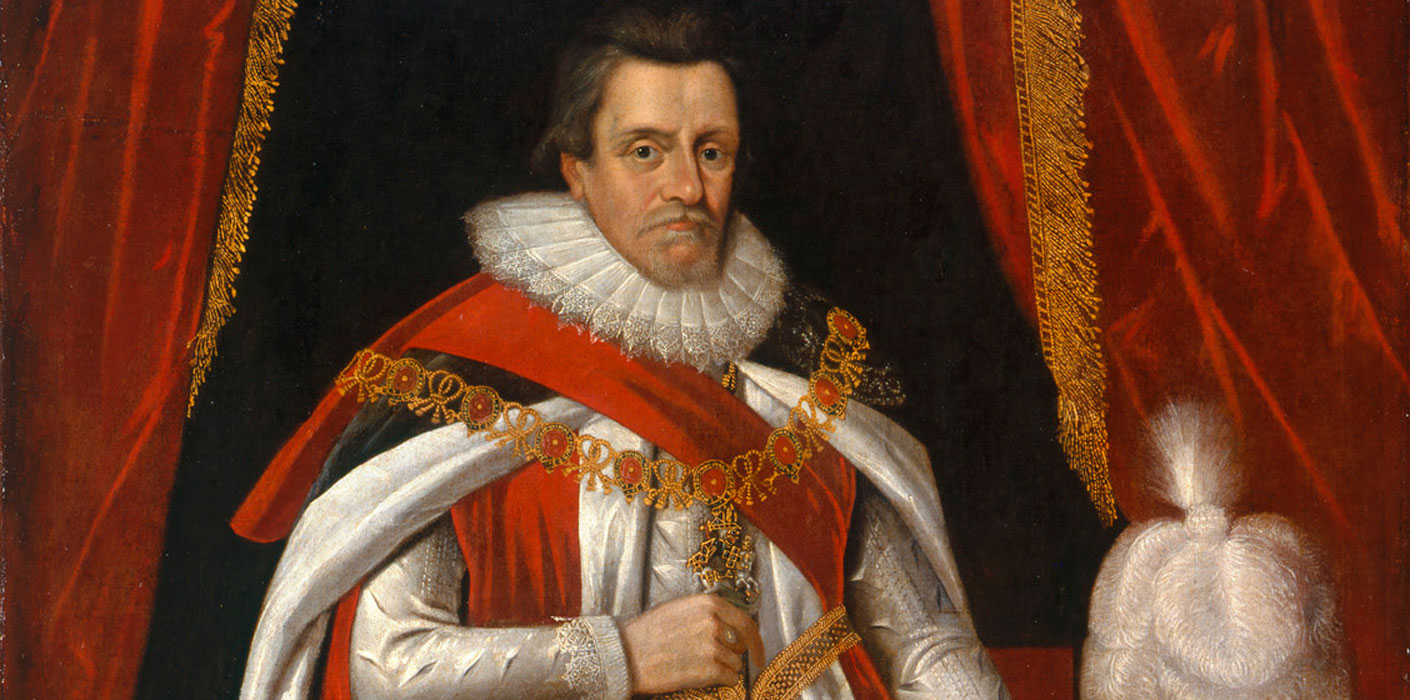 King James I (1603–1625)
King James I (1603–1625)The Pilgrims landed in Plymouth in 1620. They used the Geneva Bible, not the King James Bible. King James made Sunday Church-going compulsory at their state church. This created a major problem for many of the Protestants; especially the Calvinists and Covenanters.
Catholics were not allowed to celebrate the Mass and the king refused to listen to Puritan demands for church reform; instead authorizing use of the King James Bible that is still in existence today. He was not able to solve the country’s financial or political problems. When he died in 1625 the country was badly in debt. He persecuted many of the Puritans and Pilgrims forcing many of them to leave the country.
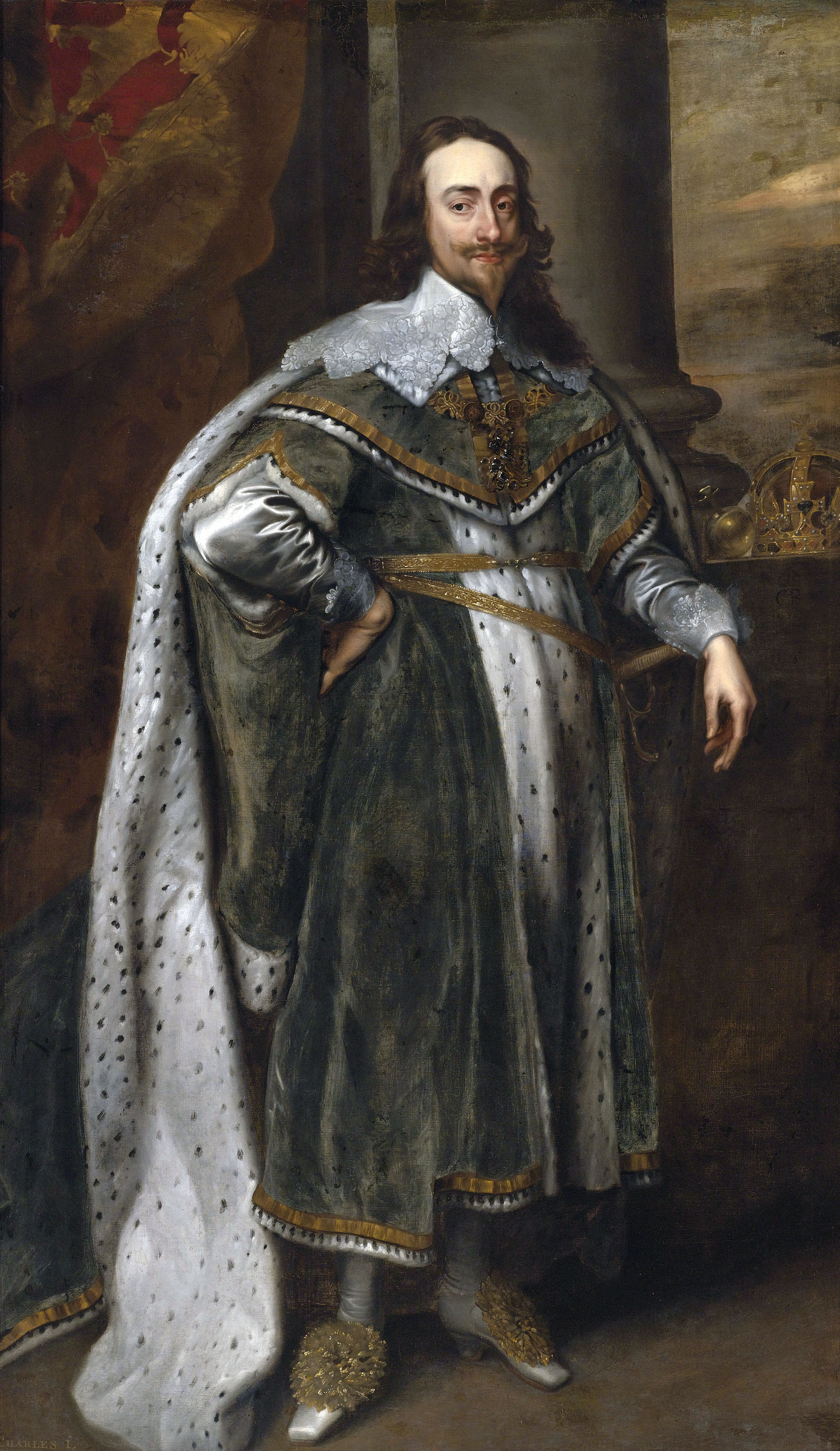
King Charles I (1625–1649)
King Charles I fought several wars during his reign. He also persecuted many dissenters of the Anglican Church; Pilgrims and Puritans. His financial state had worsened to such a degree that he had no choice but to recall a Parliament whose condemnation of his style of rule would lead the country to Civil War and to his execution in 1649.
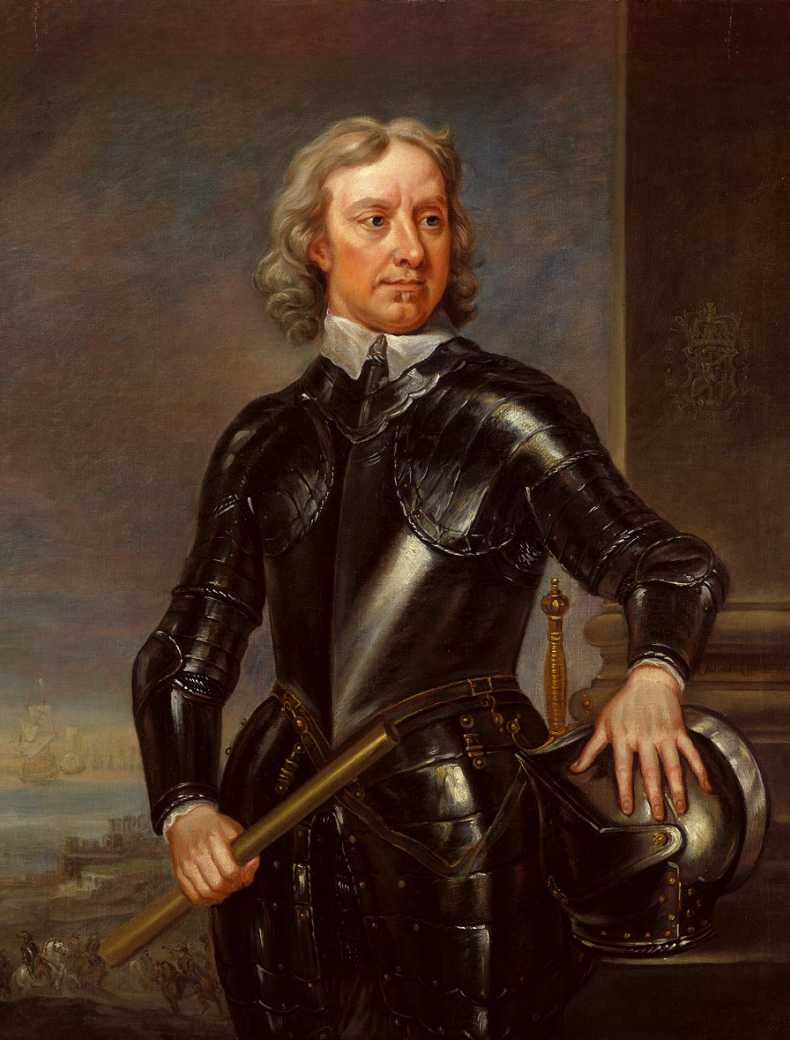 Lord Protectorate Oliver Cromwell (1649-1658)
Lord Protectorate Oliver Cromwell (1649-1658)Although he faced opposition from those who supported Charles I’s son, Charles II, as the rightful King, (especially the Scots), Oliver Cromwell succeeded in establishing a sound reputation for the Commonwealth by the time of his death in 1658. He was succeeded by his son Richard, who had no wish to rule. Cromwell’s opponents were easily able to overthrow him and after a period of anarchy the monarchy was restored with the accession of Charles II. Cromwell allowed the Jews to return to England after being banished for almost four centuries, to make loans at usury to the nation and its citizens.
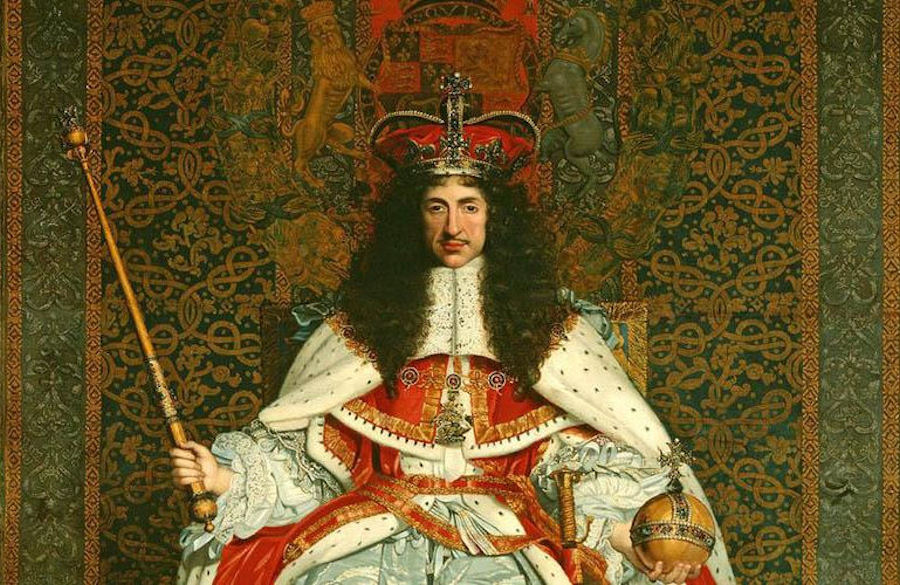 King Charles II (1660–1685)
King Charles II (1660–1685)After the execution of his father in 1649, Charles assumed the title of Charles II of England eleven years later and was formally recognized as King of Scotland and Ireland. In 1651 he led an invasion into England from Scotland to defeat Cromwell and restore the monarchy. He was defeated and fled to France where he spent the next eight years. In 1660 he was invited, by parliament, to return to England as King Charles II. This event is known as the Restoration.
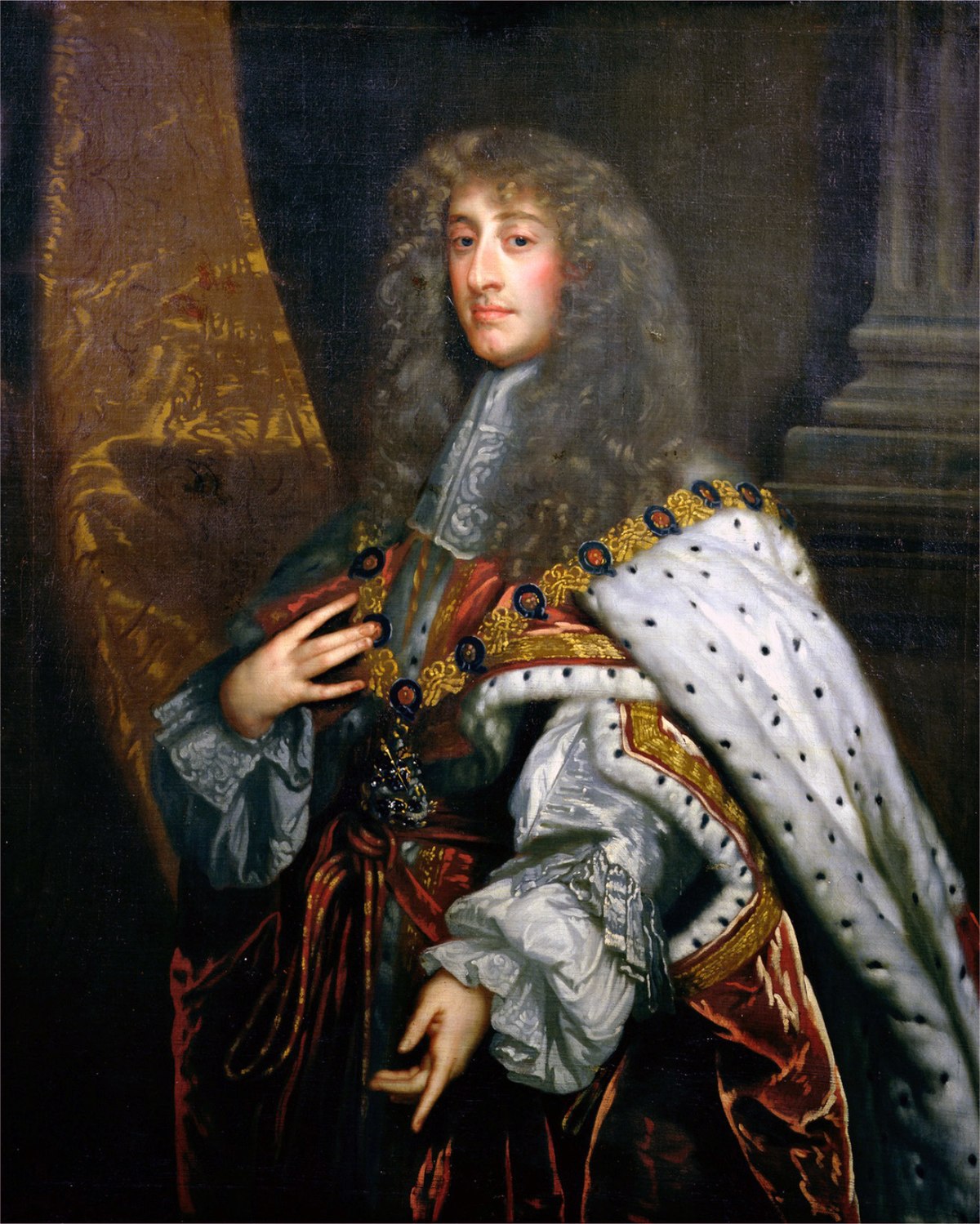 King James II (1685 – 1688)
King James II (1685 – 1688)James II succeeded his brother Charles II to the throne. After the Restoration he had served as Lord High Admiral until he announced his conversion to Roman Catholicism and was forced to resign. He succeeded despite the passing of the Test Acts in 1673 (which barred all Roman Catholics from holding official positions in Great Britain) and the efforts of Parliament to have him by-passed. He was replaced by William III of the Neverlands and he fled to France where he died in 1701.
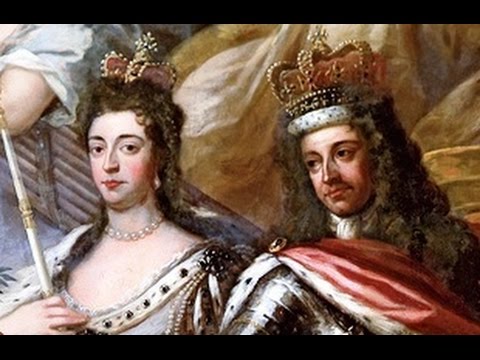 King William III (1688–1702) and Mary II (1688–1694)
King William III (1688–1702) and Mary II (1688–1694)William III and his wife Mary II (daughter of King James II), were proclaimed joint sovereigns of England in 1688 following the Glorious Revolution. They were accepted by Scotland the following year, but Ireland, which was mainly Catholic, remained loyal to James II. William led an army into Ireland and King James II was defeated at the Battle of the Boyne in 1690. Mary II died in 1694 and William ruled alone until his death in 1702.
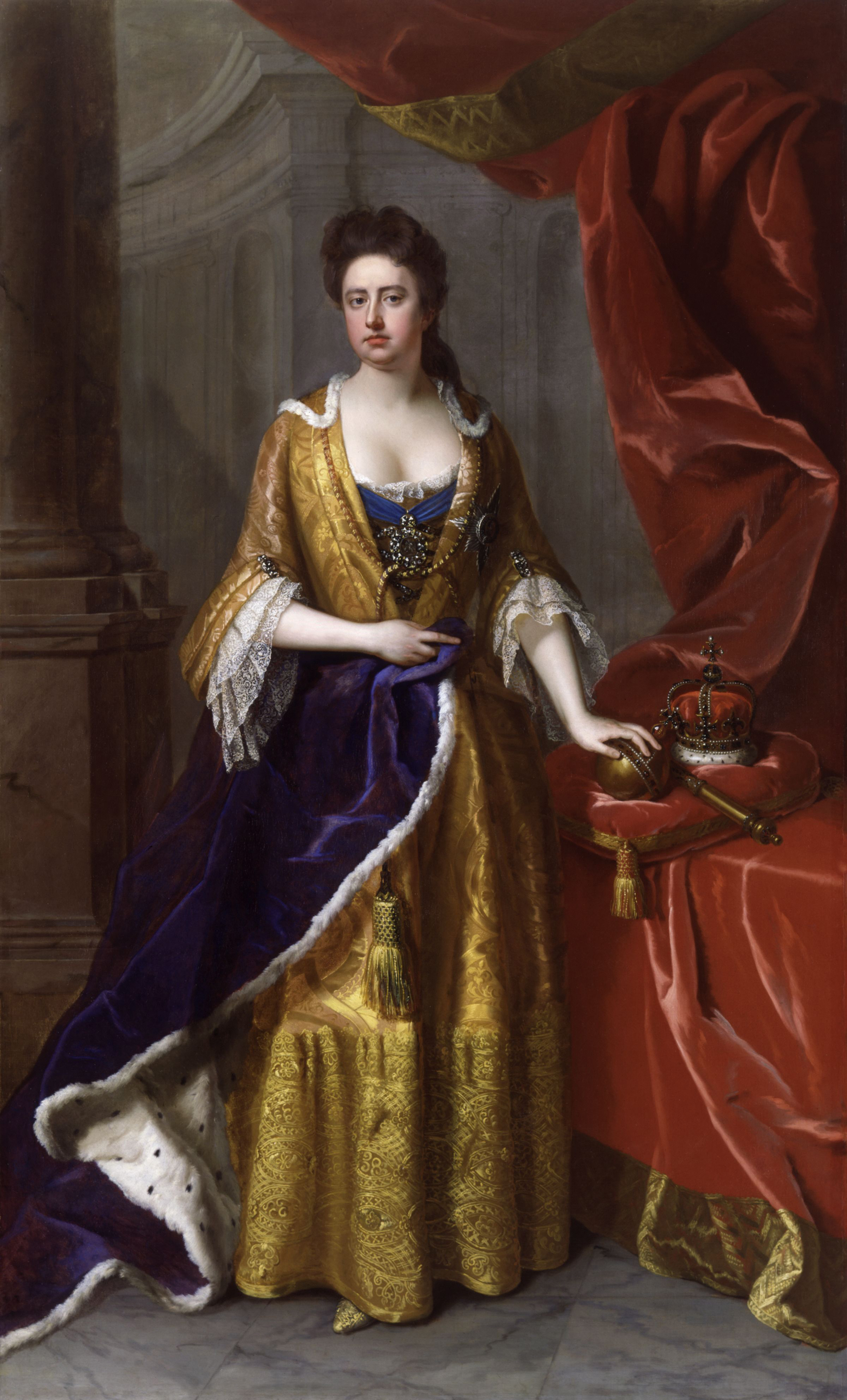 Queen Anne (1702 -1714)
Queen Anne (1702 -1714)Queen Anne was the sister of Mary II and was married to Prince George of Denmark. She was a committed Protestant and supported the Glorious Revolution that deposed her father and replaced him with her sister and brother-in-law. In 1707 the Act of Union formally united the Kingdoms of England and Scotland. She was the last monarch of the Stuarts, as none of her eighteen children survived beyond infancy.
Recommended Reading: Great Britain's Chaos. A four part history lesson of the chaos that occurred in Great Britain during the hundred years of the Stuart dynasty.
PILGRIM AND PURITAN SHORT HISTORY IN ENGLAND
The Puritans took power in England and executed King Charles I in 1649. Cromwell ruled as “Lord Protectorate” of England using martial law (military rule). England was without a king or queen for 11 years. But Cromwell made the fatal mistake of allowing the jews back into England after the anti-Christs had been kicked out for almost four centuries. He allowed them to charge usury to his brothers and to the nation over which he was in charge. We are still suffering from this sin which has spread all over Christendom.
Theater, alcohol, dancing and other worldly pleasures, like Christmas and Easter, were forbidden to the English public during the period of Puritan rule. The Protestant ethic becomes law during this period. The English monarchy was eventually restored in 1660 when Charles II, son of the executed Charles I, was placed on the throne of England and the Puritans lost their power over the nation, and soon disappeared from the world. Calvinism would still dominate in certain areas of the world, but Puritanism was dead. For the next couple of centuries, Calvinism eventually declined in the lands where it had gone.
Twenty-eight years later England was in its Glorious Revolution. In this revolution, the English population strongly disliked King James II of England because he was Catholic.
King James II gained the English throne after his Protestant brother, King Charles II, died. The English people gained political power and reshaped the nation-state by inviting the Protestant princess Mary (who is the eldest daughter of James II) and her Dutch husband William of Orange, to bring a Dutch army and force James II off the throne. (In other words, the daughter brings an army to remove her Catholic father from the throne in order to place herself and her Dutch husband on it).
When Mary and the Dutch army arrived in England, King James II was deserted by his own military, who also disliked him for being Catholic. James II fled to France. His daughter and her husband took the throne.
However, William and Mary’s powers as king and queen of England became strongly limited by the Parliament which was becoming increasingly controlled by the middle classes. William and Mary were England’s first “constitutional monarchs” which meant that their powers were limited and controlled by laws passed by the Parliament.
A Bill of Rights (1689) was passed by Parliament guaranteeing rights and the power to vote only to wealthy, property owning, Protestant, English men. The Bill of Rights also barred Roman Catholics from the throne of England as “it hath been found by experience that it is inconsistent with the safety and welfare of this Protestant kingdom to be governed by a papist prince”. The Bill of Rights directly influenced the 1776 Virginia Declaration of Rights which in turn influenced the American Declaration of Independence. King William III and his wife Mary II were the only joint sovereigns in British history to have ruled with equal powers. The Bill of Rights was presented to William and Mary in February 1689 by the Convention Parliament inviting them to become joint sovereigns of the kingdoms of England and Scotland. It also included the right to bear arms for self-defense and the right to petition the monarchy.
PILGRIMS AND PURITANS IN AMERICA
The Pilgrims who landed at Plymouth in December 1620 occupied the extreme edges of the Puritan movement. The Pilgrims were separatists while most Puritans still hoped for reformation of the Church of England. They were Calvinists, who broke with Anglican theology. They held individuals powerless to determine their destiny in the world beyond, whereas the Church of England had drifted in recent years toward an Arminian belief that through good works and faith, Christians could secure their own salvation.
The Plymouth settlers of 1620 had already broken with the Church of England. The Puritans who founded Massachusetts Bay in 1630 considered themselves reformers within the Church of England. This separatism distinguished them from their Puritan cousins in Massachusetts Bay. The Pilgrims considered themselves as strangers in the world, persecuted dissenters living in opposition to both:
- The Crown (political). and
- The Church of England (religious).
Pilgrims of Plymouth and Puritans of Massachusetts Bay increasingly shared closely identical religious worldviews and social systems. Their churches were congregational—independent, and free of ecclesiastical control. They worshipped in plain, rough-hewn buildings, absent the decorative ornaments and trappings of English church architecture. Their prayer services were long affairs, three hours in some cases, combining biblical readings, sermons and the singing of psalms. In Massachusetts Bay, one had to be a church member to be a “freeman” and participate in local government.
Ten years after the landing at Plymouth, the Pilgrims were succeeding. But these signs of growth and economic progress fostered their own problems. The small, corporal nature of the original religious settlement threatened to dilute itself through physical dispersion. William Bradford, a founder and long-serving governor of the Plymouth colony said:
“This I fear will be the ruin of New England, at least of the churches of God there, and will provoke the Lord’s displeasure against them.”
By the 1660s, when the monarchy was restored in England and Puritan rule had ceased in the British Isles, the Puritans were experiencing a large decline in church membership in America. Some congregations embraced a “half-way covenant” by which the children of non-church members could be baptized and made part members of the community.
But the writing was on the wall. While Calvinism and strains of the Puritan worldview would continue to influence religion and politics in colonial New England for many decades to come, the 18th century saw the population grow. It became imbedded with different religions and peoples and had become increasingly heterogenous, as successive generations made the transition from “Puritan” to “Yankee.”
The Revolutionary War and the political events that preceded it introduced profound changes:
- A separation of church and state,
- An end to monarchy,
- New systems of government rooted in popular consent—that had little to do with, and in many ways broke with, the system that Pilgrims and Puritans had established in their own time. It represented a victory for republicanism, not Christian purism.
CONCLUSION
Does God save you, or do you choose yourself. i.e., is it a partnership? If God saves an individual, what individuals does He save? And does He have a reason for His choice or is it random or is it based on His covenant that He made with His friend and his son and grandson and their pure seed?
In many churches today, the sermon being preached proclaims convincingly to its audience that:
- “Jesus votes for you;
- Satan votes against you, and
- You have the deciding vote.
Come up here at the end of the preacher’s sermon and say the sinner’s prayer (about a twenty second prayer led by the preacher) and be born again.”
In our nation’s early history, almost all the Christian churches were Calvinistic in their theology. Lutherans, Presbyterians, Baptist, Puritans, Pilgrims, etc. were a major part of the churches who taught that Almighty God was sovereign. That meant that it was He alone responsible in saving individuals. If God elected you, you were saved. If God rejected you, you were condemned to hell. You were born totally depraved, meaning you were going to hell, until the Holy Spirit came and led you to salvation.
Most churches in America now teach that every individual in the world was born a child of hell. Therefore, each person must be turned into a person who was “born again.” Whether God did it alone, or it was done in a partnership, it had to be done.
In the early days of our nation, it was God who “saved” an individual. The person didn’t do anything. God elected who was going to be saved before the foundation of the world. Their mistake? They ignored the blood of the everlasting covenant. They preached that God could save any one of any race. They were universalists.
As one website says:
“There are only two kinds of people on Earth today. Those whom God has saved, and those who are still lost. Right now, you are either saved, or lost in your sins.” (www.born-againchristian.info/god.htm. (Website is apparently no longer available)
But this is wrong. It is totally wrong. It is “the kingdom of God” that is to be preached. What kingdom is that. It is the same kingdom that was the kingdom of God in the Old Testament – the kingdom of Israel.
The main question is not about who is saved and who is lost. It is to know who is born into the kingdom of God and who is born into the kingdom of darkness, i.e., the enemy of both God and His followers.
Those that are born in the kingdom of God are to follow the laws, commandments, and statutes of their Father, while those who are born of the Devil are to follow the laws of their god. They both have enmity towards each other placed in their heart by Almighty God.
To be continued.
Blessed be the LORD God of Israel.


